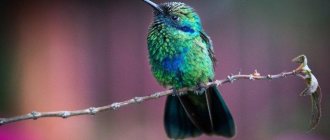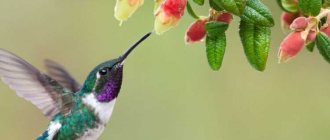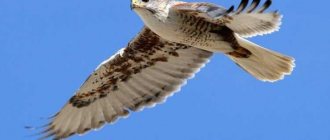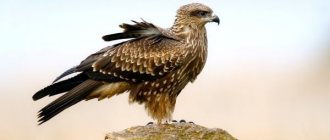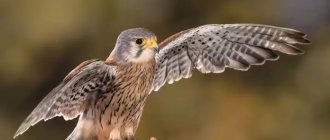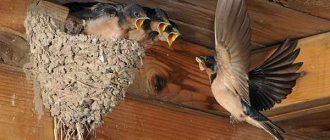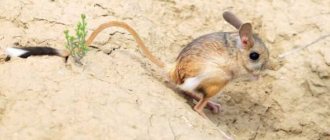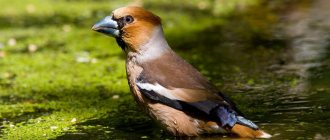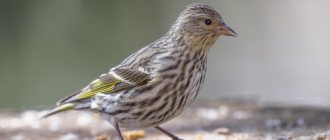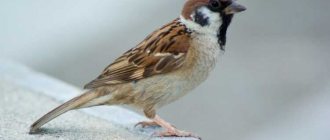Appearance and features of the finch bird
The finch belongs to the finch family; on average, the body size of this bird is no more than 15-20 cm, and its weight is up to 40 g. But if it does not stand out for its special size, you need to pay attention to its color. Usually their color is very dim, expressed in brown, gray, white and blue.
The lower part of the body and cheeks are brown, and the neck and crown of the head are gray-blue, the spot above the beak and the wings are black. There are also elongated white spots on the wings, so a photo of a finch can fascinate absolutely anyone.
Females and chicks have rather dull plumage, their feathers being mostly grey-brown. The back of the female is dark, and the abdomen is light brown; the wings, although black, also have white edges.
This description of the finch bird is suitable for the most common species, the European one, however, this species is not the only one of its kind.
Bird species finch
The main criteria for dividing finch subspecies are several points: what a finch bird looks like—what is its size and color; distribution area. The most common species are Caucasian, Hyrcanian and Kopetdag finches.
The Caucasian finch lives in the Caucasus, Crimea and northern Iran. Its main difference is its long beak, from 1 to 2 cm, which helps to remove insects from thin gorges. Also, its “singing” is more like a tit’s cry or a squeaky exclamation.
The habitat of the Hyrcanian finch is the mountains and forests of Iran, the southern regions of the Transcaspian region. This is a population of small finches weighing from 20 to 25 g, with a light underbody, dark brown and gray on top, sometimes with a red tint.
The distribution area of Kopetdag finches is the territory of Turkmenistan. They have a typical weight of 30-40 g and a fairly pale color. They are also nicknamed white finches due to the predominant white color on their wings and tail.
Lifestyle of starlings
Starlings are social, outgoing, trusting and extremely intelligent. They are not afraid of people and easily settle even in large and noisy cities. But they just don’t like dense thickets, mountains and rocks.
Habitats
Starlings are distributed literally throughout the planet, except for some regions of America. They have always been somewhere, but they were brought somewhere specially. For example, starlings appeared in Australia and New Zealand not without human intervention. But things didn’t work out in America.
Starlings are friendly towards humans, but are very aggressive towards other birds. There are cases when they displaced entire species of birds from their area. They especially often quarrel with woodpeckers.
Photo: o-prirode.ru
Diet
Starlings are completely and completely omnivores, which in many ways allows them to survive almost anywhere. They feed on worms, snails, butterflies, larvae, grasshoppers and other insects. Flocks of starlings are capable of carrying out entire raids on fields and gardens, destroying everything in their path. They even masterfully learned to open nuts and other shells with their beaks.
Photo: funart.pro
Wintering
Starlings from southern regions, including Southern and Western Europe, lead a sedentary lifestyle. The rest are forced to fly south with the onset of cold weather in search of warmth and food. They return in early spring, and this is where the first problems begin. Heat-loving starlings may not survive severe frosts.
Sociable birds travel in equally large and friendly flocks. And only closer to the ground do they disperse in search of comfortable areas for life. The number of one such flock can reach up to a million individuals.
Photo: krasivosti.pro
Captivity
Compared to other wild birds, the starling is quite easy to tame. It can even be taught to imitate sounds. A spacious cage with a bath and perches is a must. When it comes to food, they are practically omnivorous and can eat meat, fruits, cottage cheese, vegetables, eggs and greens. With proper patience, you can even tame an adult starling, and this is a real rarity.
Photo: photocentra.ru
Singing finch bird
Many consider the main distinguishing feature of the finch to be its singing. His singing is very loud, somewhat similar to the trill of a lark, but quite individual and attractive.
The finch songbird begins its trills with a small whistle, which turns into a three-second intermittent singing. The trills of finches often differ due to their habitats and species.
Thus, in the entire population of finches, there are approximately twenty melodies, while individual adults perform about five. Therefore, young chicks and females perform only simple melodies and monotonous sounds.
The singing of a finch can be heard from the moment it returns to its nesting sites until the end of July; later the finches begin to sing less frequently and more quietly.
Natural enemies
During the construction stage, nests are very visible, so they are often destroyed by other birds. Woodpeckers, crows, magpies, jays, as well as squirrels and stoats are especially dangerous for small finches.
In addition, a shortage of nesting areas poses a serious threat to the finches population. This is due to the reduction of forests, human economic activity and a number of other factors of concern for the sensitive bird.
Photo: pinterest.ru
Admiral butterfly (60 photos): description, species and habitat
Finch lifestyle
Finches are considered to be migratory birds; in mid-autumn they gather in flocks of 50 to 100 individuals and fly short distances. These are mainly the territories of Central Europe, Crimea, Central and Asia Minor. They return to their nesting sites from the end of winter until the end of April. Not the whole flock arrives at once; the males arrive first, followed by the females a week later.
However, not all finches leave their permanent nesting sites. These are mainly birds living in the Caucasus and the European part of Russia.
The finch lives in sparse deciduous and mixed forests. They do not choose dense forests, as this makes it difficult to find food on the ground while feeding their chicks. Their nests are located on a tree no higher than four meters, since females often have to go down for food and then go back up.
Habitat
The finch is a bird, the photos of which are sometimes mesmerizing, often found in forests and forest-steppes, city squares, even near human habitation. The chaffinch is known in Russia, Crimea, Kazakhstan, and Africa. Its main habitats are forests of European, Asian and American countries. It is there that birds fly away in September-October for the winter, gathering in small flocks and moving from place to place.
The finch is a small bird, slightly smaller than a sparrow. It is easy to recognize by its motley elegant plumage. The finch has a gray-brown back, green rump, black wings with white stripes, a burgundy breast, and a gray or bluish head.
Bird finch feeding
The female feeds the chicks with various larvae and insects that they can get on the ground or other surfaces: caterpillars, spiders, beetles, flies, ants, etc. They also obtain plant food, which includes tree seeds, oats, fruits, berries, buds and foliage.
It is worth mentioning that the wood finch helps
not only for forests, ridding them of harmful insects, but also for agriculture, but many are quick to blame the bird for harming crops.
What does a starling eat?
Photo: Starling in Russia
The menu of adult birds is varied, they are omnivores, but the main part of it is insects. Most often these are pests of agricultural crops.
The diet consists of:
- dragonflies;
- moth;
- spiders;
- flies;
- grasshoppers;
- mayfly;
- ;
- bees;
- ants;
- Zhukov.
Birds feed on both adult insects and their larvae. They can extract worms, wireworms, and insect pupae from the ground. They eat snails, slugs, small lizards, and amphibians. They can destroy the nests of other birds by eating eggs. Starlings eat any fruit, berries, grain, plant seeds, and food waste. Although these birds have difficulty digesting food with a high level of sucrose, they happily consume grapes, cherries, and mulberries and can completely destroy the crop by flying into trees in whole flocks.
These birds have several methods of catching insects in their arsenal. One of them is when they all fly together, catching midges in the air. In this case, the birds use the technique of constant movement, that is, individuals from the “tail” of the flock strive to take a position in front. The larger the cluster, the closer the birds are to each other. From a distance it looks like a moving and rotating dark cloud. Another way is to eat insects from the ground. The bird pecks at the surface of the soil at random, as if probing it, until it stumbles upon an insect.
Starlings are also capable of expanding holes, enlarging passages formed by insects, and thus drawing out various worms and larvae. Also, these birds, seeing a crawling insect, can lunge to catch it. They can peck insects not only from grass and other plants, but also manage to set up a “dining room” for themselves on the back of grazing livestock, feeding on animal parasites.
Interesting fact: Just as starlings widen the passages of insects in the ground, they use their sharp beaks to break through garbage bags, and then widen the hole, opening the beak, and then fish out food waste from the bags.
Life period and reproduction of the finch
The lifespan of a finch is quite short: in the wild, on average, from one to three years, and in captivity it can live even more than ten years. Often finches die while searching for food on the ground, where they can be caught by a predator.
After returning from warm regions, male finches examine their territory to see if it has been occupied by other birds that have not previously nested here. If this happens, then fights arise between the birds in order to drive out the strangers. The next step is to attract females, who arrived from wintering a little later, with the help of trills.
After courtship, about a month later, the finches begin to create their own home. To begin with, they look for a suitable tree, mainly birch, pine or spruce, but there may also be oak, maple or linden.
Also, weather or other birds stealing material for laying can spoil the finches' plans for arranging a nest, and, therefore, laying eggs occurs later.
Lifestyle
The finch is in many ways reminiscent of a sparrow; it easily finds a common language with people and often lives next to them. The diet of this bird is unpretentious; for the winter (provided there is a warm climate), the bird builds itself a strong nest, which it diligently camouflages.
Very often the finch can be found at a stadium or in a city park. If a bird is worried or senses approaching danger, it makes loud, sharp sounds that are repeated over a wide range of frequencies. The loud sound of such chirping should force the enemy to stop pursuing the bird.
Sometimes finches do not want to show everyone their excitement, then they squeak loudly, indicating anxiety. Such sounds resemble a thin, drawn-out whistle; it begins with almost no sound and ends with a gradual disappearance of the volume to zero. A bird can give similar signals to its fellow tribesmen in order to warn them of impending danger, but without appearing to the eye of a predator, without giving away its location.
Stoats are one of the main enemies of finches
The finch is an unpretentious and hardy bird. Its main enemies are small predatory animals that love to destroy bird nests. Finches can be hunted by owls, woodpeckers, magpies, crows and jays.
In addition, the main enemies of finches are cats, stoats, squirrels and martens.
Where found in nature
Finches love to live most of all in deciduous, coniferous or mixed forests. They only don’t like the taiga, because it’s quite difficult to get food there on the ground. It is not uncommon for a finch to live in a summer cottage or garden plot.
What does it eat?
The main diet of this bird is insects; in addition, the bird does not refuse weeds, fruits, and berries.
Diet of finches
Finches actively hunt for insects in the spring, and they feed on them throughout the summer, until the end of August. They really like small bugs and weevils. Finches rid tree stands of these pests, which brings great benefits to the environment.
Migratory bird or not
Finches prefer to fly to warmer regions for the winter. Some species of these birds that live in a suitable climate can remain for the winter. Most of the birds set off on a long journey with the onset of the first frost, around the beginning of October. They can fly to the central part of Europe, to the shores of the Mediterranean Sea. Some birds winter in the Caucasus, birds from Siberia prefer to winter in Central Asia and Kazakhstan.
The migration to wintering takes place with the participation of the entire flock, which can include up to a thousand individuals. Birds move south at a speed of more than fifty kilometers per hour. Finches return from wintering from February to April. First, the males return to their place of residence; the females catch up with them after about a week.
Flock of finches
Chaffinch bird nests
As soon as favorable weather arrives, the finches start creating their nest. They weave them on side branches closer to the trunk. Most often this is done by the female, although the male helps collect material for the future nest.
The shape of the nest is cup-shaped, the frame is twigs and tree bark, and the bottom and walls are filled with moss. To prevent all this from falling apart, the female connects the materials with threads of cobwebs; the inside of the masonry is made of feathers and down.
Finches are also accustomed to camouflaging their nests by lining them with lichen and the bark of the tree on which it is located.
Chaffinch chicks
At the end of spring, the female begins to lay eggs. In the clutch of one female there are from three to seven eggs. The eggs themselves are quite small, no more than two centimeters in diameter, they are colored greenish or yellowish with reddish inclusions.
The female incubates the offspring for about two weeks, and while the male takes care of her, gets and brings food, and also protects the nest.
The chicks hatch tiny with red bodies and fluff on the top of their heads. Since newborns cannot take care of themselves, both parents do this, bringing them food in the form of larvae and insects.
Within two weeks, the chicks become a little stronger and are already trying to fly. The second clutch of finches occurs at the end of July - mid-August, but this time there are fewer eggs.
